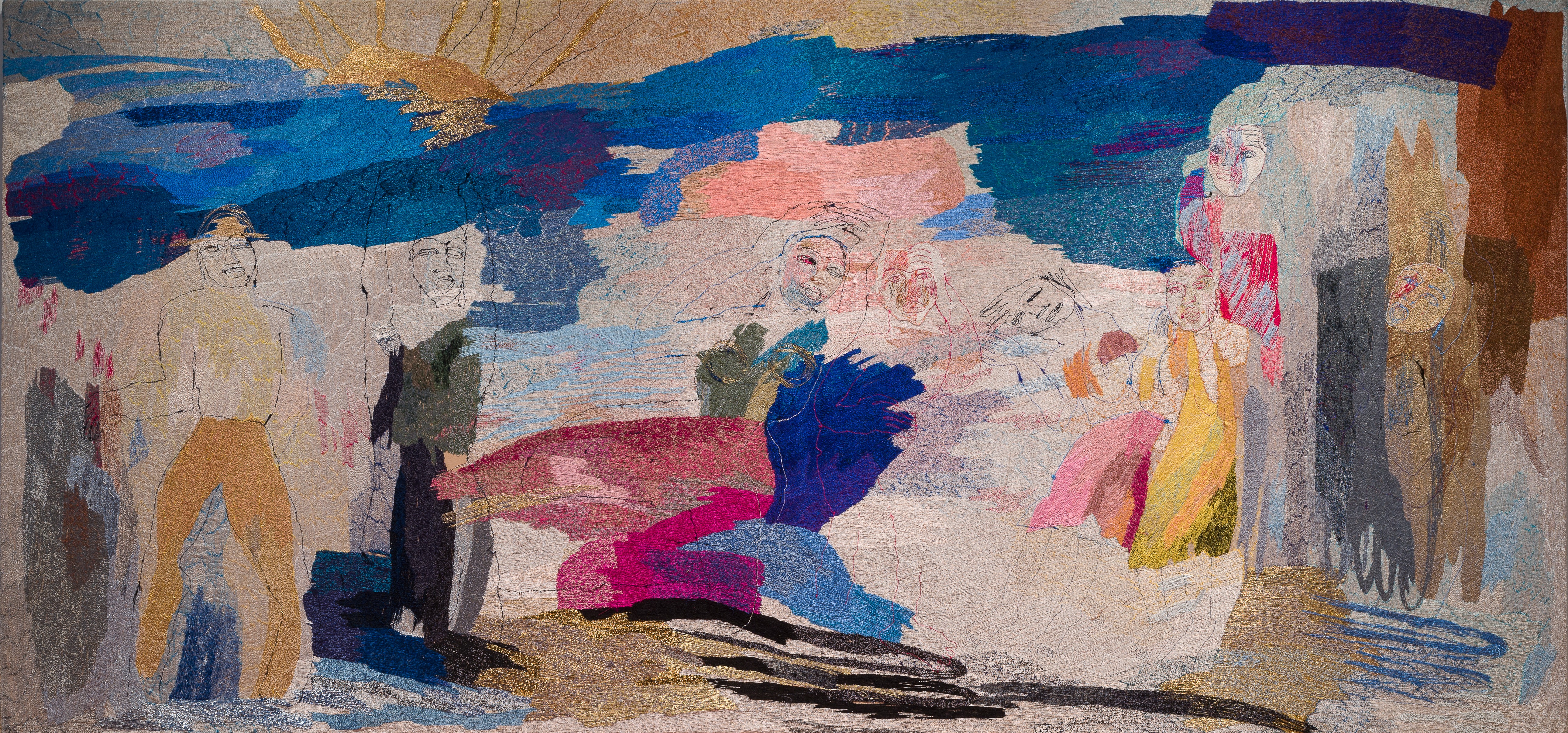Alice Kettle’s Odyssey (2003) is a stitched response to Homer’s epic poem The Odyssey. The huge canvas, on the scale of a medieval tapestry, provides scope for the cinematic narrative to unfold, with two parts of the story being told in this single work.
Kettle’s canvas shows the stitched figure of Odysseus on the left and his wife Penelope on the right, against a painterly embroidered backdrop. The piece illustrates the story of Odysseus’ journey home from the Trojan War, during which Penelope attempts to protect herself from suitors until his return. To do this she cunningly agrees to accept one of them, but only after she has finished weaving a burial shroud for Odysseus’s father, Laertes. However, each night she unpicks her work so that the shroud is never finished.
Kettle trained first as a painter and later studied textiles at Goldsmiths in London. She is now celebrated for her experimental work in the medium and is represented in many public collections both in Britain and abroad.
Alice Kettle’s textile works exploit large-scale mechanical processes and emotive, figurative scenes. Her work asserts the power of myth and storytelling emphasising its centrality to human life. In her exploration of narratives, she draws inspiration from literary, mythological and poetic sources delving into their power to form worlds. Her works are massive in scale, which creates an almost cinematic impact, yet on closer inspection, they are incredibly detailed and craft a lyrical narrative through exquisitely intricate embroidery.
Originally made for the Mythscapes exhibition (2003-05) at the Bankfield Museum in Halifax, England, Kettle’s embroidery tells the dual story of Penelope and Odysseus. Homer’s epic explores notions of rites of passion, faith and endurance, which are the references for Kettle’s process of making the resulting artwork. By crafting a narrative in embroidery, Kettle centralises the role of Penelope even as she is absent from the image. In The Odyssey, Penelope fends off suiters by weaving a burial shroud for Odysseus’s elderly father Laertes and claiming that she will choose a suitor when she has finished. Every night for three years, she undoes part of the shroud and this is presented as an equally heroic action to Odysseus’s journey.
Kettle’s tiny stiches combine to create richly textured, painterly strokes of colour. These form the sea and land which are opposing forces, obstacles and fluid elements that Odysseus traverses throughout the story. These unsteady and fixed worlds reflect the experiences of those within them and this work, made in a personal time of turmoil for the artist, recreated for her a sense of home: a place in the world. Kettle renders this epic story in an epic scale capturing both the vast scope and the emotional intricacies of the story.


